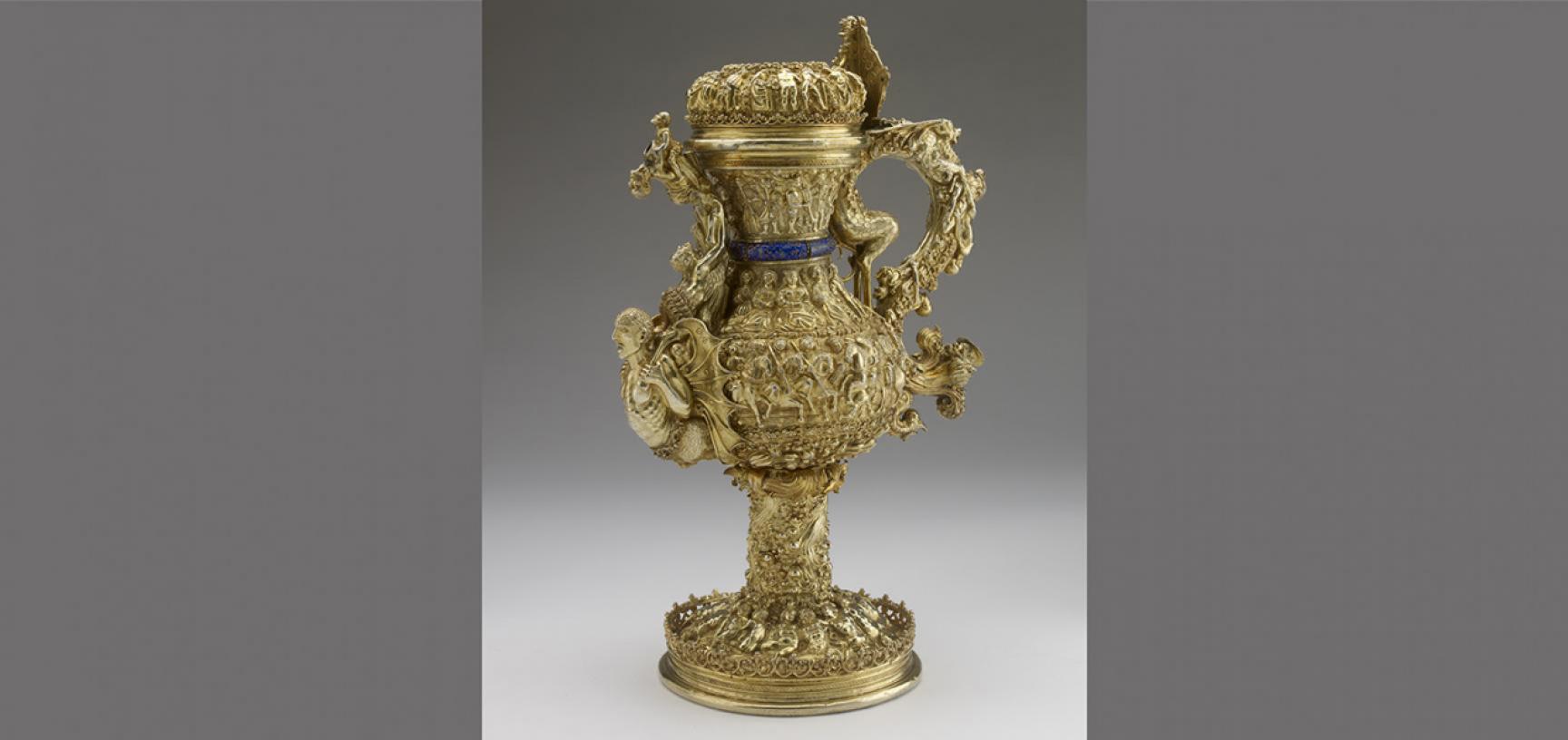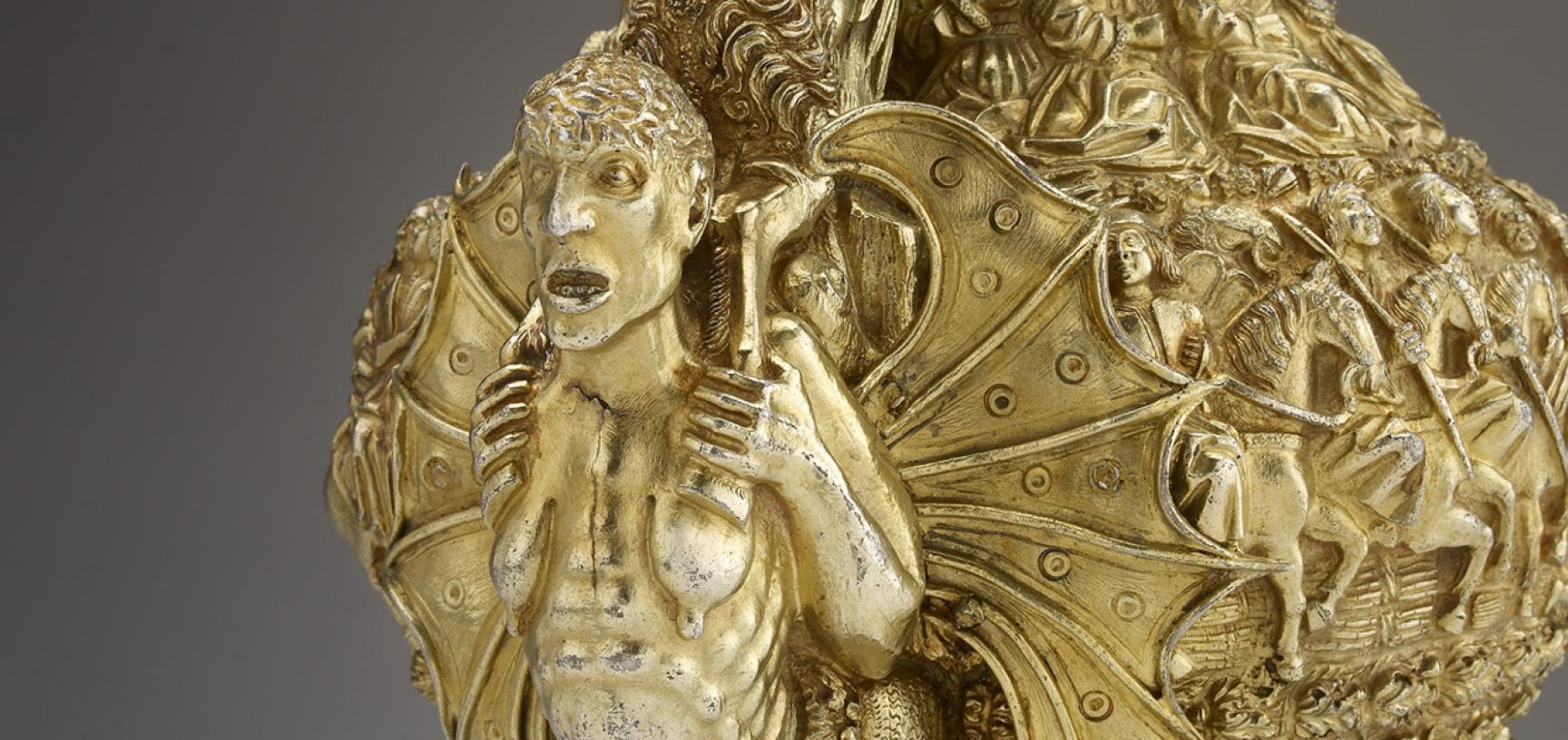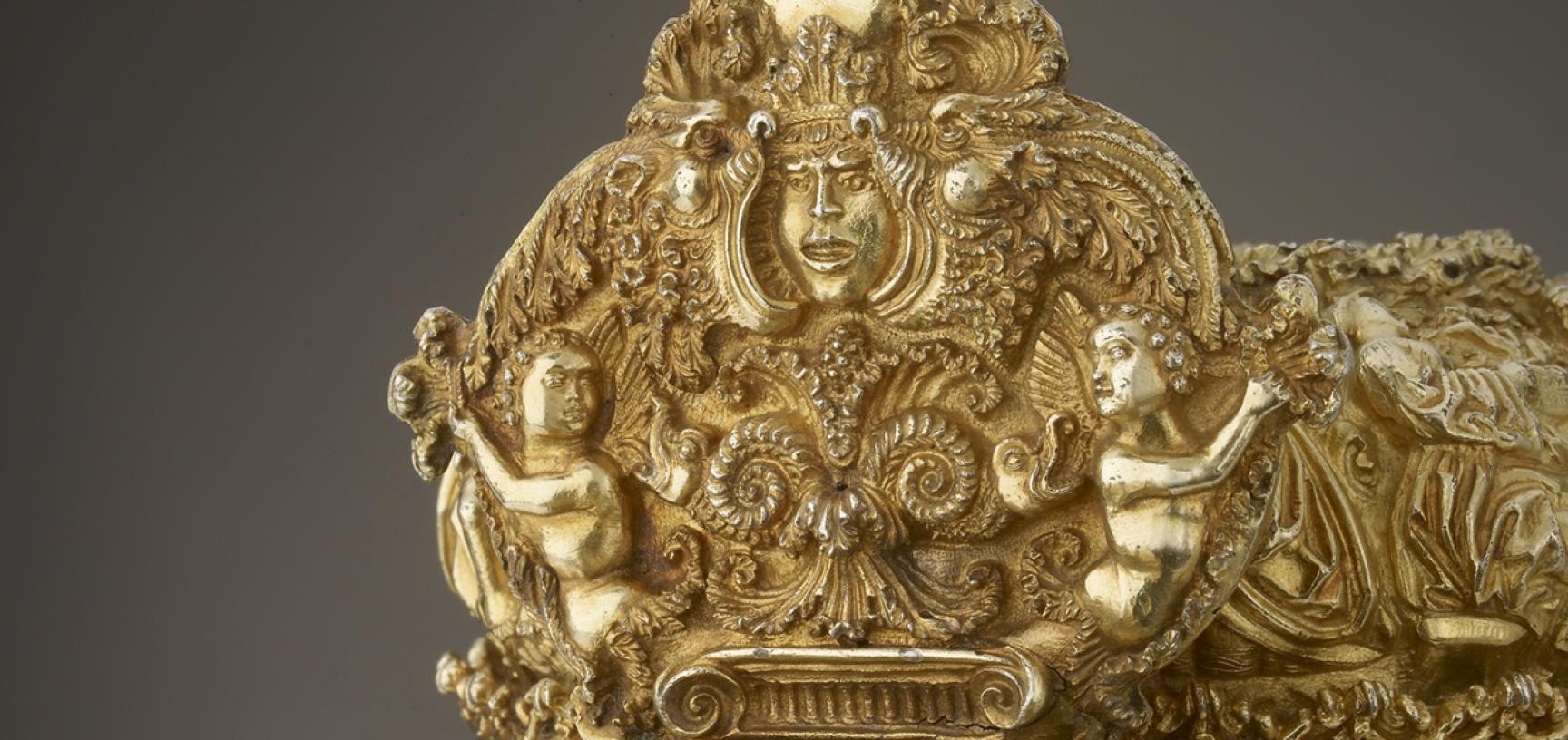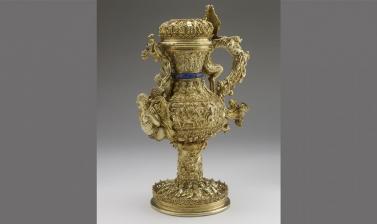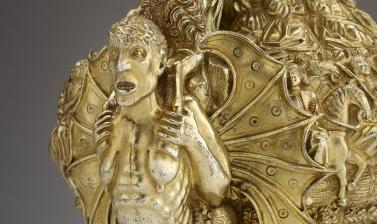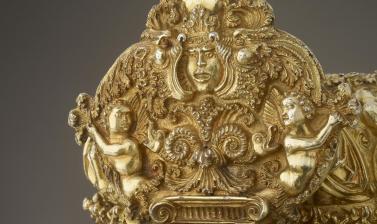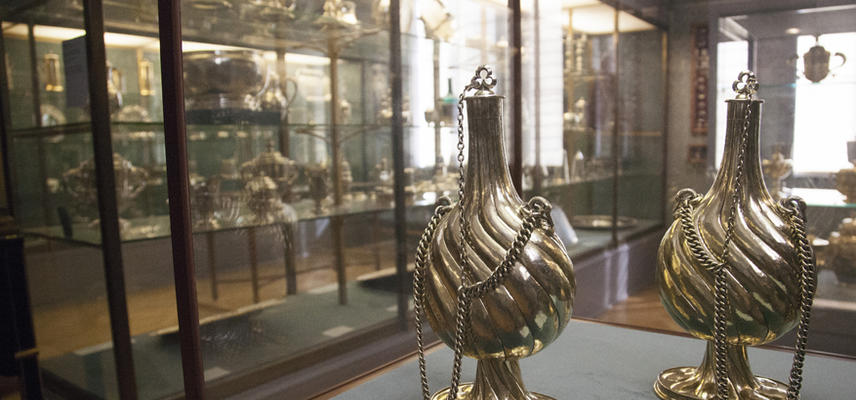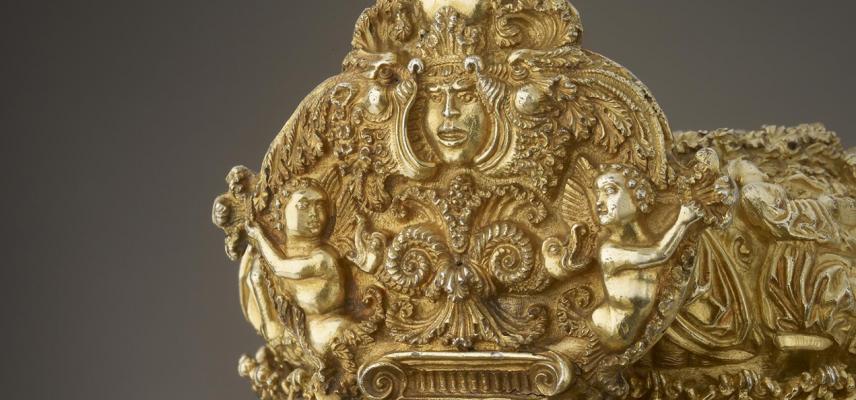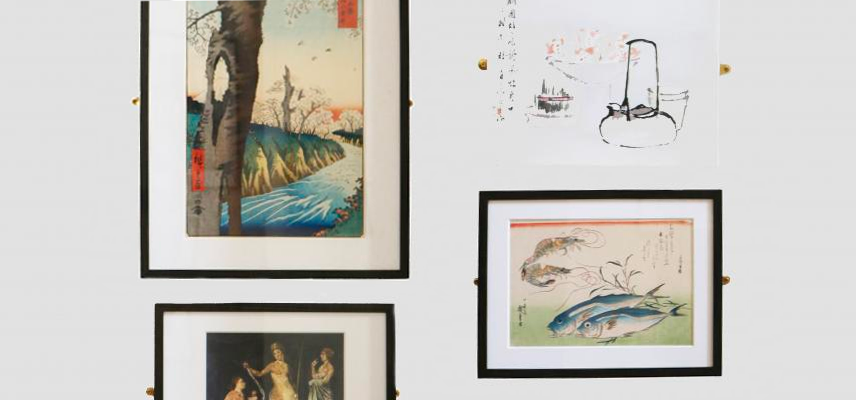PORTUGUESE GILT EWER
A fantastic world in an eclectic style
Manuel I was King of Portugal from 1495 to 1521, a period during which Portugal led Europe in voyages of exploration and colonisation, such as those of Vasco da Gama. The architecture and decorative arts of Manuel’s reign, including works by artists and craftsmen who came to Portugal from elsewhere, are characterised by a style known as Manueline, which is dense in ornamental texture and amazingly eclectic. Manueline architecture and art combine elements from the Gothic and Italian Renaissance styles, Flemish art with elements from Portugal’s Islamic heritage, and influences from the lands – in South America, Africa, India and the Far east – which were being newly explored by Portuguese navigators.
This bizarre and monumental silver-gilt ewer, which would have had an accompanying basin enabling it to be used for hand-washing at the table, has cast and chased decoration on every possible surface. It dates from the end of Manuel’s reign or shortly afterwards. The handle is fantastically formed with monstrous figures, acrobats, and male and female heads, above two scaly legs with claws. The spout, now truncated, is formed as a tree-stump with acrobats, supported by a sphinx-like figure. Around the body and on the lid are bands of hard-to-interpret figures including a queen with attendants apparently watching a joust, musicians, courtiers, horsemen in combat, frolicking fish-tailed centaurs, monstrous figures and naked men flaunting their bottoms. An enamelled roundel of the royal arms of Portugal on the lid and the enamelled band round the neck are recent additions.
Portugese Gilt Ewer
Portuguese, possibly Lisbon
c. 1520–30
Silver-gilt, with enamel additions
Height 43.5 cm
Bequeathed by Michael Wellby, 2012
View on our online Collection Online Site: WA2013.1.41
License this image - visit the Ashmolean Image Library


